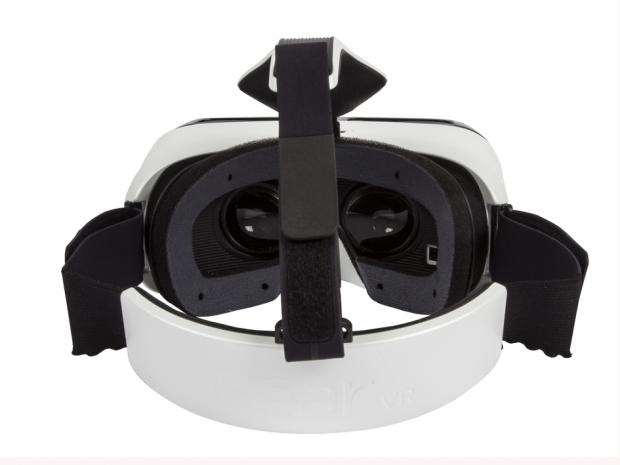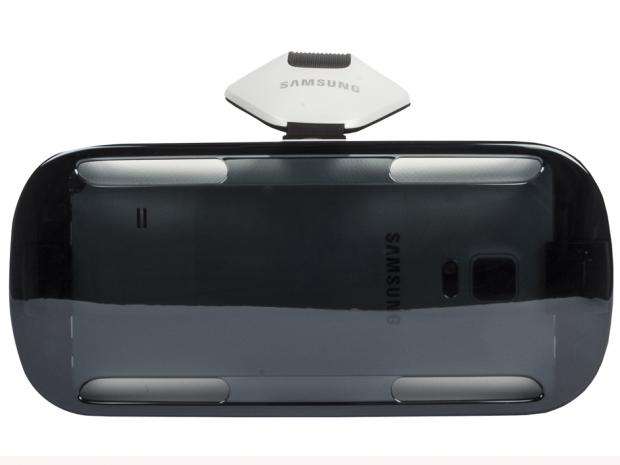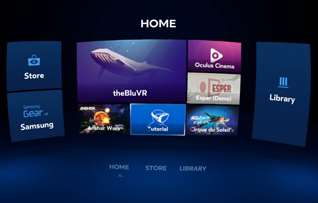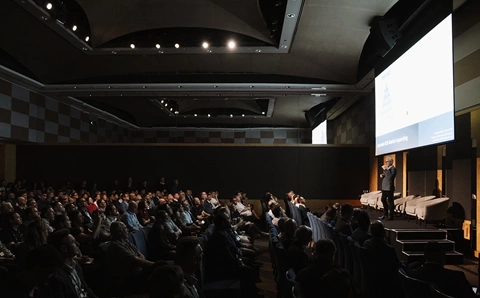If it looks fairly basic from the outside, as soon as you don the headset, you'll realise there's a lot more at work here. By employing a series of gyroscopes - technology licensed from Oculus VR, the Facebook-owned organisation behind the much-hyped Oculus Rift headset - the Gear VR tracks your head movements in real-time, providing a seamless and completely immersive VR experience.
It really is impressive, and you only have to kick off one of the sample 360-degree movies to see how good it is. Our first try was with TheBluVR, an app Samsung supplies to showcase the technology. It's an educational VR CGI “video” that flies you through a seascape, providing a basic educational commentary, and allowing you to look around freely as you go.

Being able to follow a killer whale's progress as it swims in front of you, or a shark as it approaches and swims behind you, is an experience that convinces us that this is a technology that's here to stay. Anything that causes PC Pro's otherwise articulate editor-in-chief Tim Danton to blurt out “that's amazing” like a hormonally unbalanced teenager has to be pretty good.
And this isn't where the Gear VR's talents end. It's possible to play games, view static, yet still immersive, 360-degree photographs, and even watch standard 3D and 2D movies via the Oculus Cinema app. The latter isn't as daft as it sounds: the app places you in a virtual cinema seat in a virtual cinema: you can watch the movie as comfortably as you'd expect, but look left or right and you'll see empty seats. Since the screen doesn't follow you around, it's completely convincing and as a result the viewing experience feels completely natural.
Some of this content is supplied on a microSD card, which comes with the headset, but you can also download further apps, games photos and video from the Gear VR's store app. Not all of it is inspiring, however. Milk VR's selection of 360-degree videos are effective, but rather boring, and most of the games are lightweight “look, shoot and explore” affairs.
Some are more developed - Temple Run VR, for instance – but within five minutes of playing this game we were reaching for the sick bucket. The sense of motion sickness was simply too much to bear, proving that not all types of game will be suitable for the full VR treatment.

Despite this, there's enough here to provide a tantalising insight into what the VR content of the future might look like. The aforementioned TheBluVR, for instance, is paper thin, but a fully fledged app would be a revelation in an educational environment. Being able to pause the action, zoom in on a particular creature and launch a floating information panel, drawn from Wikipedia, could create a new genre of pedagogic tools - immersive documentaries that fully immerse the student in the subject matter at hand.
The cinema is another taster of things to come: why sully your minimalist designer living room with a huge 100in telly, when all you really need for the full home theatre experience is one of these strapped to your noggin accompanied by a pair of decent headphones? For now, however, the resolution isn't high enough for it to be mainstream.

Up this close, you can clearly see the grain of the Galaxy Note 4's AMOLED display, especially around the edges of text, buttons and graphics. And that isn't terribly surprising: the Note 4 may have an incredible high-resolution screen (2560x1440), but split it into two and look at it from an inch away, and it looks less impressive.
Still, in years to come, as the pixel density of LCD panels rises inexorably, it should be a genuine alternative to static TVs and projectors for big-screen viewing.
Next: the verdict





_(11).jpg&h=142&w=230&c=1&s=1)






.jpg&w=100&c=1&s=0)
_(8).jpg&w=100&c=1&s=0)









